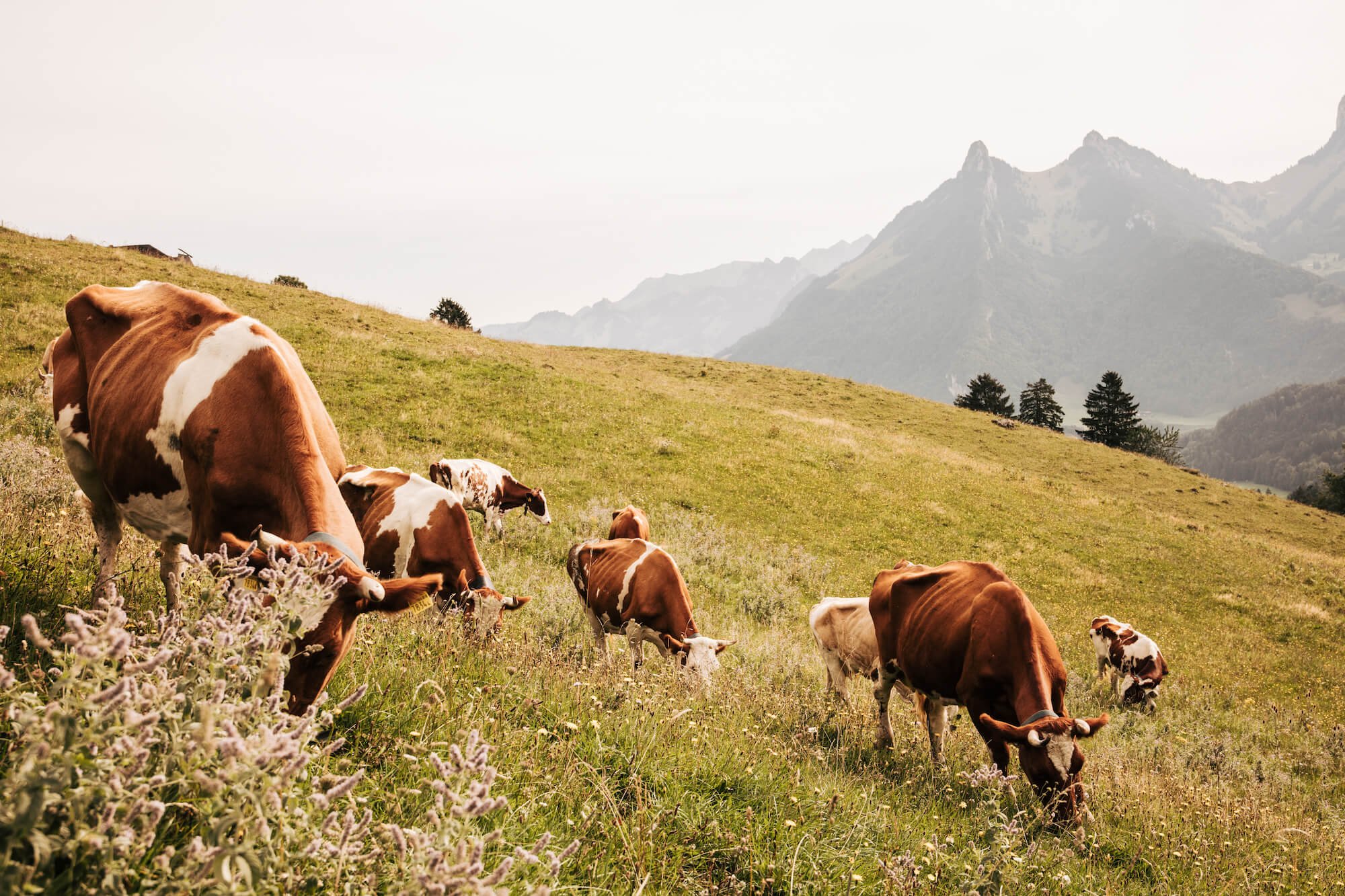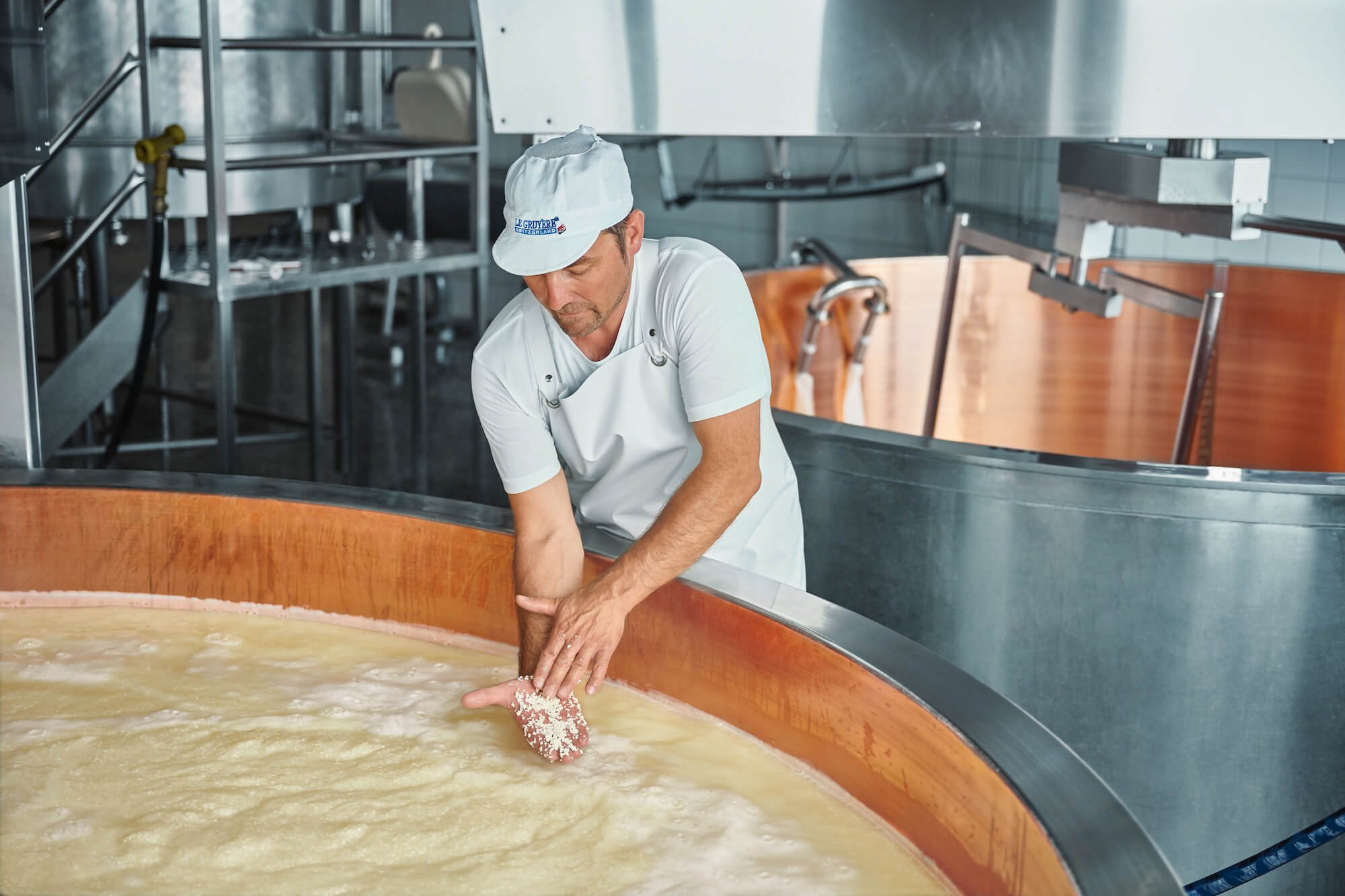Is the Name Gruyère Generic? A U.S. Court Says Yes; Swiss Cheesemakers Say No
European geographic designations such as PDO, AOP, or AOC products used with wine, cheese, and cured meats, etc., enjoy name-protected status throughout the European Union. These distinctions mean that products that have any of those indications, such as Le Gruyère AOP, are considered to be geographically unique: that specific conditions which give particular character to the cheese cannot be replicated anywhere else, and the name therefore cannot be used outside of the designated region, and even then only for cheeses made by certain exacting criteria. “In Europe, it's a protection to value a product,” says Denis Kaser, Head of International Marketing for Le Gruyère AOP, and to protect the people who make it according to ancient traditions. “It needs tradition,” says Kaser. “It needs a recipe, and it needs a protected area.”
Those name-protected designations, however, do not automatically extend beyond the borders of the governing entity, meaning that other countries may use protected names if they believe they have reason to. In the United States, for example, courts have upheld the regional specificity of products such as Champagne and Parmigiano-Reggiano, (giving rise to alternate, evocative names like parmesan, which was itself even fought, unsuccessfully, by Parmigiano-Reggiano producers,) but have ruled that other products, such as Muenster, have become generic over time, and are free to use by U.S. producers. Gruyère is one of the latest products to have been determined to be “genericized” over time, allowing U.S. cheesemakers who make gruyère, (lower case intentional) to continue using the name with impunity. (Cheeses such as cheddar and gouda, despite being named after places, have no such protection even in their home countries, and have long been considered generic or common cheese names.)
The Recent Ruling on Gruyère
Cows grazing in Switzerland photo credit Petter Backlund.jpg
To understand this in a broader context, it is important to consider how Gruyère, and other styles of famous European cheeses, came to be made in the U.S. in the first place. Wisconsin, in particular, is home to a great number of Swiss immigrants, among other cultures, who very likely brought Gruyère recipes and techniques with them, feeling as though they were paying appropriate homage to a cheese they were familiar with making. “There are Swiss cheese makers in Wisconsin,” says Kaser, “and they made it the way they learned. But the milk is not the same.” Gruyère has been being made in the U.S. for decades, according to Shawna Morris, Senior Director of the Consortium for Common Food Names (CCFN,) in accordance with specific parameters set by the USFDA, which does include guidelines for the aging of the cheese, but not as much for the condition of the milk.
Dairy Farmers of Wisconsin, in fact, includes the following description of gruyère on their website, which itself echoes Kaser’s argument: “Gruyère is one of Switzerland’s most prized cheeses. Over there, they have all sorts of rules and regulations to follow when it comes to this centuries-old golden melter. In Wisconsin, our only gruyère rule: make it delicious.”
In 2020 a collective of Swiss and French cheese producers petitioned the U.S. Patent and Trademark office to cease the use of the term gruyère by U.S. cheesemakers, arguing for the regional specificity for the product, in a move the CCFN described in a press release as “aggressive and predatory.” After the petition was denied by the USPTO, the Swiss and French collective petitioned the U.S. District Attorney, who, again in December 2021, ruled in favor of those defending the broad use of the name: the Consortium for Common Food Names, the U.S. Dairy Export Council (USDEC), and the National Milk Producers Federation (NMPF), among other American dairy stakeholders.
A Triumph for U.S. Cheesemakers: American Gruyère Lives On
Wisconsin Gruyere photo courtesy Wisconsin Cheese.jpeg
Naturally, for the various American councils who fought the petitions, and American cheesemakers who make gruyère, the decisions by both the USPTO and the U.S. District Attorney are a relief and a triumph.
“(We) are pleased to see this U.S. District Court decision reaffirming that gruyère is a generic style of cheese that can be produced in the United States or anywhere around the world,” says John Umhoefer, Executive Director of the Wisconsin Cheese Makers Association (WCMA.) “Not only is this a landmark victory for American dairy farmers and cheese producers who offer gruyère, this win sets a vital precedent in the much larger, ongoing battle over food names in the United States,” says Jaime Castaneda, executive director for the CCFN.
When Alpine Cheese is Not Alpine: The Swiss Reaction
Gruyere_AOP_Fromager_cmyk
Of course, the ruling is extremely disappointing to those who make AOP Gruyère in Switzerland, citing history, milk quality, microbial conditions, and Alpine culture among the many reasons that the name Gruyère deserves widespread, international protection. “It's not a matter of ego, it's just a matter of that it's a product that has been made since 1115,” says Kaser. “It's more than 900 years of a cheese made the same way. We have some dairies that have salt baths that are older than 150 years. There’s a DNA; a culture that is used in the cheese by many generations,” he says, not to mention the various wild botanicals that Alpine cows graze on during the summer that provide the raw milk that gives Swiss Gruyère a distinctive flavor. (American gruyère may be either raw or pasteurized, but is certainly devoid of access to high Alpine pastures either way.)
The ruling also has broader implications than just permitting American cheesemakers to utilize the name. Because gruyère is legally considered a common cheese type in America, European countries outside of Switzerland and France are also allowed to make cheese called gruyère, so long as it’s only sold for export in the U.S., with Kaser spotlighting Finland, Slovakia, and Germany as countries making similar style cheeses that are shipped to the U.S. for packaging with a gruyère label. “We also know that we are fighting against companies that turnover billions of dollars” on the sale of gruyère, including brands such as Roth and Boar’s Head,” says Kaser.
Confusion for Consumers
Le Gruyère AOP
In light of the ruling, one of Kaser’s and Le Gruyère AOP’s ongoing missions is educational, in terms of reaching American consumers to help them understand the difference between true Swiss Gruyère and domestically produced gruyère, no small feat given that many of us were introduced to the puzzling concept of “swiss” cheese at an early age. (Generic swiss is an Emmenthaler knockoff that also bears little resemblance to the real thing.)
“It is more profitable to teach people,” says Kaser, with a message that emphasizes “original” Gruyère versus “imitation” gruyère, with a dash of “imitation is the sincerest form of flattery” in the mix. “We've been copied,” says Kaser, “and people only copy the best. If you have a (domestic) gruyère and you’re looking for a Swiss Gruyère, if you try it once you won’t a second time.”
While education is the primary part of the long term strategy, Le Gruyère AOP is also sometimes up against intentionally confusing labeling practices by those who package domestic gruyère, according to Kaser. “What I really don't like is the abuse,” he says, citing side by side packages at certain retailers where one is Le Gruyère AOP and another is domestically produced gruyère, but the design and font are nearly identical.
The Future of Gruyere
While American cheese producers are allowed to keep making cheese called gruyère, along with education, Kaser says this isn’t the end of the line for the Le Gruyère AOP cause: “It's been a fight for over 10 years, he says. “So the next step is we are keeping on fighting, because we have nothing to lose.”




